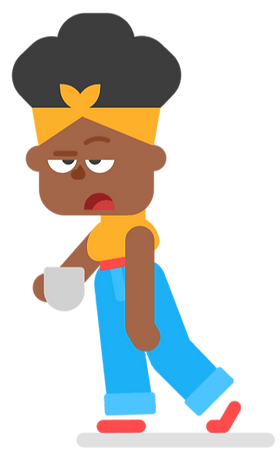duomind
SITE LANGUAGE: ENGLISH


What's up Guys?!

Today, I thought I could share an album I’ve been obsessed with lately while teaching you about a specific type of hallucinations. I hope you enjoy!
Reading the notes written on the Bandcamp page for Sonhos Tomam Conta's marvelous third album is difficult, but necessary to understand what hypnagogia is all about.
"Every day I wake up longing for the time when I sleep, when all of this pain goes away.", she says. It's about four paragraphs in total, and none of it ever feels giddy or positive. Hypnagogia is about one thing only: what it means to exist when your entire world feels like it's crumbling in front of you.
In the medical world, hypnagogia is the transitory state between falling asleep and waking up. Due to the brain having a hard time staying in this often disorienting state for so long, hallucinations are frequent.
"This is where this album stands; an attempt to recreate the colours and atmosphere of the last state of consciousness that I could take.", Conta says about her personal experiences with it on that aforementioned Bandcamp page.
Despite the fear and worry that being in this state can bring, she turns every second of it into an ethereal universe of unknowns. But this raises some questions.

1. What’s the difference between a hypnagogic hallucination and a dream?
Sensory Involvement:
-
Hypnagogic Hallucinations: Often involve vivid sensory experiences, including visual, auditory, and tactile hallucinations. These sensations can be highly realistic and may feel as if they are happening in the external environment.
-
Dreams: Involve a combination of sensory experiences, emotions, and thoughts, but they are more immersive and self-contained. Dreams usually unfold in a narrative format, with a sense of continuity.
Duration:
-
Hypnagogic Hallucinations: Tend to be brief and fleeting, lasting for a short duration. They often occur during the early stages of falling asleep.
-
Dreams: Can have variable durations but are typically more extended and can last for several minutes or even longer, depending on the length of the REM cycle.
Integration with Reality:
-
Hypnagogic Hallucinations: May involve a blending of real and imagined elements. People experiencing hypnagogic hallucinations may have difficulty distinguishing between the hallucinatory content and their actual surroundings.
-
Dreams: Are more detached from external reality. Dream scenarios are usually experienced within the confines of the dream world and are not typically confused with waking reality.


2. Is there any correlation between mental health and hypnagogic hallucinations?
While the precise cause of hypnagogic hallucinations remains unclear to researchers, these experiences exhibit neurological similarities to both daytime hallucinations and dreams. They are moderately common, so most people consider that it isn’t associated with a health condition.
However, Sonhos Tomam Conta reveals that she deals with a variety of mental health problems: “Every day I have to deal with my bipolar disorder, borderline personality disorder and social anxiety”.
In fact, it is accepted that people who deal with these kinds of problems are more vulnerable to experience these hallucinations. Additionally, sleep deprivation is a key factor that triggers hypnagogic hallucinations, occurring either during daytime naps or throughout the night.
Narcolepsy is also commonly associated, and some medicine like antidepressants have been linked to the occurrence of hypnagogic hallucinations, which even Conta admits having used “I've tried more than 20 different types of medicine, antidepressants, mood stabilizers, antipsychotics and anxiolytic”. Unfortunately, the mechanisms that associate these with hypnagogic hallucinations are not fully understood yet.
.png)

3. What can hypnagogic hallucinations lead to?
Some people think that these hallucinations are a cause of concern, but they are quite common and there is no need to worry about them, since they are rarely caused by any type of serious mental health disorder.
Also, hypnagogia is quite a big font of creativity, Sonhos Tomam Conta was not the first to use it to create a piece of art. Salvador Dalí popularized it by using these immersive experiences he had to create beautiful paintings. Franz Kafka and Edgar Allan Poe also used them to write their typical somber stories.
It’s amazing to see that all my favorite artists are inspired by these hypnagogic hallucinations 😍!
Care to listen?!

Thank you for taking some time to learn about this! Hope you enjoy the album too!

